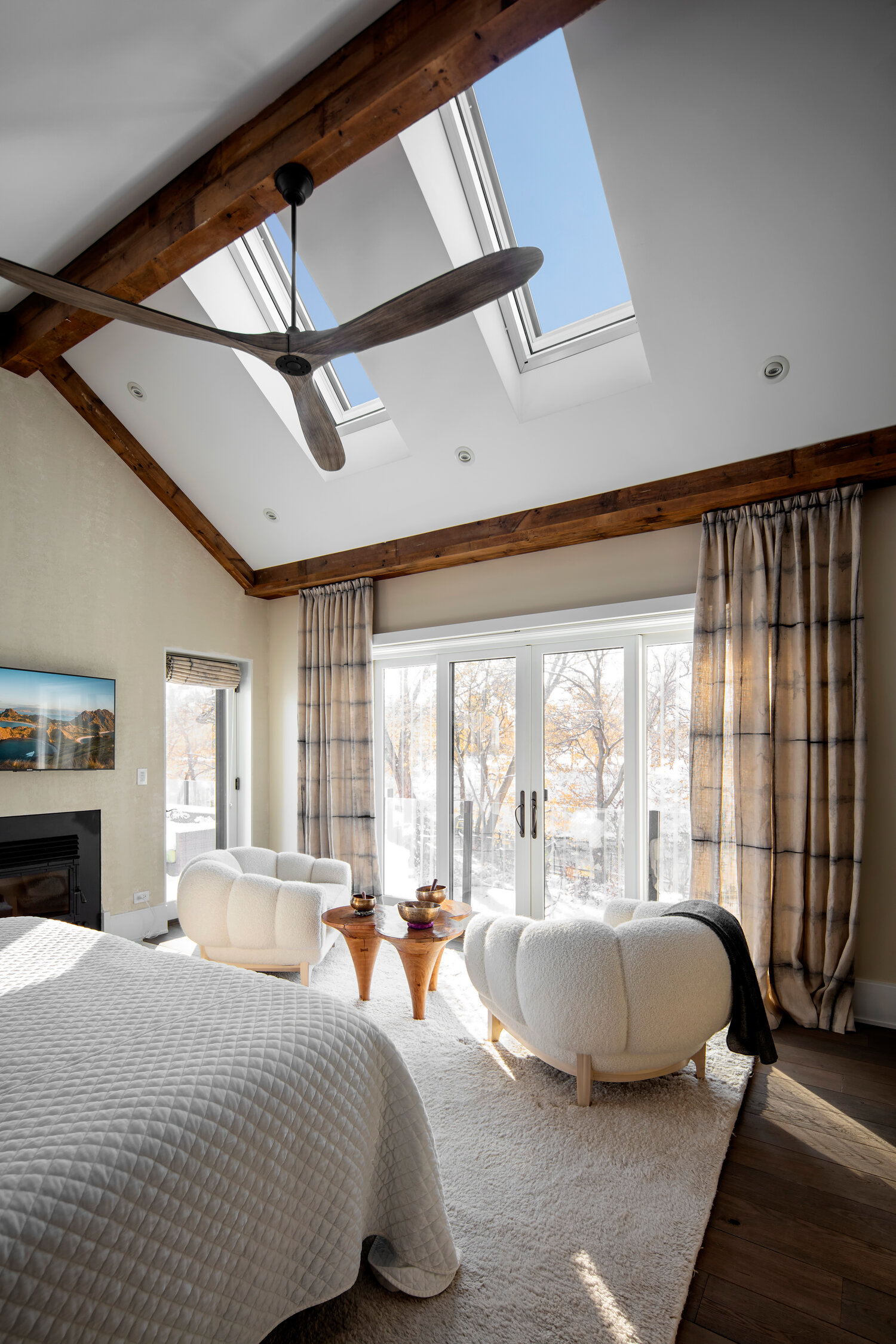Homes have always been havens and sanctuaries. Now, they are also workplaces and learning centers.
As you try to protect the health and wellness of all those who live in your home, did you know that your home can actually protect you? The way a home is designed and constructed can affect its overall sustainability (carbon footprint), resiliency (ability to withstand weather extremes and other harsh elements) and health (prevention or mitigation of health-impacting circumstances).
There are several elements of a home’s design that can provide peace of mind:
Air quality:
High performance homes require efficient air intake. The outside air is brought in through a high efficiency air-to-air heat exchanger that is combined with a HEPA grade air filter. A HEPA filter removes at least 99.97% of particles that are 0.3 microns in size. An N95 mask, for comparison, only removes at least 95% of 0.3 micron sized particles.
All electric homes do not have any combustion emissions within the house and consequently have a healthier indoor air quality. Using an induction cooktop is a great way to have an amazing cooking experience with zero indoor emissions. Most of the top chefs have completely embraced this way to cook.
Using non-toxic materials within the house helps make the indoor air quality as healthy as possible. This includes not only the finishes and construction materials, but also the furniture, clothes and consumer products (like perfumes and hair care products) that are brought into the home.
Using non-toxic and natural cleaning products also helps with the indoor air quality.
Architectural skylights provide natural light that enhances cognitive function and learning, regulates circadian rhythms for better sleep cycles, and provides natural ventilation which improves energy efficiency by reducing reliance on air conditioning.
Smart home technology systems help homeowners enjoy a level of indoor air quality akin to hospitals by monitoring indoor air quality and temperature and matching smart lighting to a person’s circadian rhythms.

Water:
A rainwater capture system allows a homeowner to channel water into a barrel for use in irrigation or other non-drinking water uses. There are also gray-water systems that can be installed to recirculate water in your homes in a way that does not contaminate drinking water.
Home level water filters are a great way to make sure your drinking water is safe and healthy. Per the Well Standard, the water filter is specified to meet the specific filter requirements of the exact water coming into your home.
Power security:
Reducing reliance on the grid – especially when that grid is stressed – provides peace of mind should conventional power systems go down. Solar photovoltaic panels, when combined with a battery backup system, can provide a portion of a home’s power, generating electricity needed to run critical mechanical systems, water heaters, cooktops and other key devices.
Other electricity that doesn’t come from solar can be generated by renewable power purchased from the retail electric market.
An additional level for peace of mind is a battery backup system, which allows you to store electricity from solar panels and use it at night or if the power goes out. You can get the full benefits of a battery back-up system even without solar panels, as the batteries can simply store grid power and use it when needed or when the price of electricity is higher than when the electricity was stored into the battery.
Resilient features:
Resilience is the ability to have a home withstand natural or manmade impacts and recover quickly.
A homeowner can opt for many elements that boost a home’s resilience such as metal roofs set atop of a roof whose sheathing is fully covered with Ice and Water Shield. This helps keep a home watertight even if high winds damage the roof.
Oversized gutters and downspouts are able to keep up with extreme rain events.
Smart landscaping can absorb intense rains and prevent water pooling around the houses foundation.
Multiple and redundant sump pumps on carefully sized battery backup systems help keep your basement dry.
